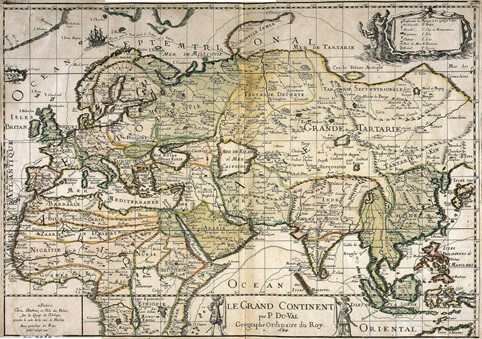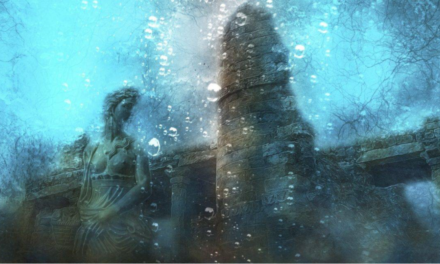The fabrication of historical facts lead human beings astray more than anything else known by mankind”.
Jean-Jacque Rosseau
“There are two kinds of History: the official one which is taught in schools, a compilation of lies as “usum delphini”; and there is a secret history that deals with the true cause of events – an outragious chronicle”.
Honorè De Balzac (Lost Illusions)
“History is a set of arranged lies”.
Napoleon Bonaparte
“We can agree upon the fact that the commonly taught History is the most boring subject. Nevertheless the study of how History has been manipulated is the most interesting subject of all”.
Michael Tsarion (Astrothology and Sudereal Mythology)
“History is written according to the orders of the elites, and even re-written according to their needs and wishes”.
Nicolai Levashov (“Russian History Viewed through Distorted Mirrors”, 2007)
Background
Let’s pretend that…
What would we think if the magnficient Tartarian civilazion had been destroyed by the planned help of some obscure, not-human forces? What would happen if the history we have been taught at school reveals itself to be a gigantic fraud – soap opera kind of style – with ghost dynasties, events moved around time and the creation of thousands of years that never existed? What if the Middle Ages were a Tartarian Golden Age that happened just 100/150 years ago? What if Rodhes’ Colossus were nothing else but the Statue of Liberty? What would happen if we were to realise that all we know is just the outcome of a lie? And moreover if the Great Tartary’s defeat, were to be “Troy’s downfall”, or “The Fall of the Roman Empire”, or “Costantinople’s Sack”, the “Decline of the Ottoman Empire”, the “American Civile Wars”, the “Collapse of the Qing’s Dinasty ( first years of XXth century)”, the “ Fall of the Russian Empire (1917)”, the “Defeat of the Austro-Hungarian Empire (1918)” and the “First World War (1919)”?
What if the “Great Flood” happened 150 years ago in a more culturally and advanced world? What if unknown “parassites” did generate a natural disaster and did benefit from chaos in order to take power? What if, between 1865 and 1876, our ancient civilization had been effected by 300mts high waves which left just sand and mud behind, and whose traces can be now found in cities all over the world?
What would happen if the Etruscans, the Mayans, the Chinese Emperors and the Egyptian Pharaos cohexisted in the “Middle Ages” together with all the other civilations in order to create one harmonious culture, sharing the same language and the same DNA (even though they have been identified with a dozen or so of names, made up by Jesuitical-Benedectine-Cistercian “hystorians”? What if Hyperborea in Artic Polar Circle were the land of our divine ancestors?
What would happen if the “Church” did create a wrong theory around the Solar System, had blessed all the wars and all the unspeakable crimes in order to kill the “Spirit of Mankind”? What if a group of “parasites” did fabricate false religions and a false Christianity? What if those religions did worship Satan pretending to worship God? What if “Solomon Temple” were Hagia Sophia in Instanbul? What if the city originally called Yoros (Jerusalem), Troy and Costantinople turned out to be Rome?
What would happen if the Greek Empire and the Roman one did not exist at all? What if the megaliths, “carved” all over the world were built by Tartarians with cement that becomes more resistent as the centuries go by? What if Egypt true pyramids were dismantled by French mercenaries?
What if some Dutch and German merchants and imperial financial agents did rebel against Great Tartaria and decided to create Countries, mafias and monarchies able to reign and enslave the rest of the world with names like “the chosen ones”, the “Illuminati”?
What if Tartarian buildings were lightened 700 years before a “grey” man called “Thomas Edison” started to deprive humanity of free energy and to establish cartels to the benefit of fews?
What would happen if obelisks, churches, mosques and cathedrals were in reality old Turkish/Ottoman power stations for ectracting clean electromagnetic energy, healthy and wireless, and for producing all kinds of waves, mostly infrasounds, which have been destroyed or equipped with crosses by “the parasites” in order to hide their original purpose?
Forward
Our research is based on the assumption that since their birth organized human societies evolved, while improving socially and technologically, and expanding through the centuries or the millenia, even disappearing in the deepest historical oblivion. It is quite common to come across archeological discoveries that bring to light ancient cultures that existed before, during and after Sumerian, Greek, Egyptian and Roman ones, etc…
Someone, in a recent past, did write “Those who win wars do write (or rewrite) history!” I personally do not fully agree with it: those who have interest in managing political-economical-strategical power do rewrite history…noy only the ones who win. I am going to make a current example.
In a global society, where wars are fought among industrial and financial groups it is more convenient the creation of a sort of “guild” instead than going physically to war against the enemy. In other words: creating a strategic alliance [1] with market segments, financial empires to “devour” weakest sectors. As Karl von Clausewitz wrote:”...war is not only a political act, but it is a true political tool, a continuation of political activities through other means”. It is easier to pacify markets than armies, because the first ones are looking for their own economical interest, the second ones are looking for the victorious glory in the battlefields.
In any case, today we are witnessing works of that kind of paradigm. Many so called “Multinational” industries gathered in “Guilds” named Big Data, Big Pharma, etc., come together with bigger groups and companies in order to dominate a vaster market. Each one of them is highly skilled in financial-industrial branches encompassing many sectors. Two are the factors in common: profit and power. Profit means personal wealth and prosperity; power represents the capacity to raise above every thing and have the “means to do according to one’s own will...” [2].
I would like to make a comparison with something that “pacifies” the various markets, finances, real estate business, industry and science: I could talk about this “pandemic” that triggered so many actions by various multinational industries. They did rush in joint ventures in order to conquer vaccine, hospital assistance, internet, energy markets. They granted themselves a huge share of power, economical and political opportunities because of the “pandemic” [3] ….that adversity for many people on the Planet has been a “manna from heaven”.
After the decaration of pandemic by the WHO, many pharmaceutical Guilds took over State Sovereignty.
That example replicates the modus operandi of human beings since always. The Fourth Crusade was announced by Pope Innocent III the day after his election in 1198. That Crusade was aimed against Muslims in the Holy Land. In reality it turned out to ransack Byzantium ( the Byzantine Empire, therefore Christianity). The Byzantine Empire was divided and the Crusaders created the Latin Empire. That Crusade was lead by Venice.

Picture 1: The Conquest of Constantinople by the Crusaders in 1204, by David Aubert; source: Wikicommons
Venitians, being such good merchants, asked for 85.000 Silver Imperial Marks payment by the Crusaders. With that outragious amount of money, the Venitians would have had supplied by the end of June 1202 boats to carry 4,500 knights with their horses, 9,000 squires and 20,000 infantrymen. The contract provided food and forage too. Venice committed to arm 50 galleys to escort the Crusaders in exchange for half of their conquests. The conditions were accepted. And three days later a solemn Mass was celebrated in San Marco,10,000 people attended, for those who were going to wipe out other Christians, guilty to hinder Venitians and Papal Circles trades. Also in that case, economical and power aspects are the ones to decide. Disguised as a Crusade against the unfaithful Muslims, there is only the profit of Venitian, Fench, German and Dutch Merchant Guilds. Costantinople is wiped out, its inhabitants, Ortodox Christians, are butchered by other Christians. Only to create a wider Empire and safer commercial routes.

Picture. 2: The Fourth Crusade, 1204
I do apologize for having lingered in some past examples, but I wanted to clarify a concept: an Empire is kept together by business deals among the membering Kingdoms. Could that have been possible in a recent past?!?
Could have been possible that global civilazions did build empires that prospered and evolved and then disappeared in the folds of history and excluded in the hystorical chronology of mankind?
The Great Tartaria
All that we know about that vast Empire of our recent past is that it was located in the Norther Emisphere, that it was technologically very advanced. During Middle Ages all of proofs of its existence were buried, modified and taken apart, up to the day in which, around 1700, a catastrophe wiped the population out. All the references to the Empire of Great Tartaria were omitted by academical works.

Picture 3: Map of Greater Tartary, by P. Du-Val, ordinary geographer of the King, 1684
Many hystorical texts ascribe the disappearance of some civilazation to the Mongolian invasion. But I consider that just a covering for a vaster attack on the whole Earth.
Let us come to the point.
Before entering a more specific description about the Empire of Great Tartaria, we should talk about its location, its organization, its culture.
Beside what is mentioned in the British Encyclopaedia and Wikipedia about the origin and the location of the Great Tartaria, it seems that the “official” History is hiding a great world power which existed til the end of XIXth century.
In part 1 we will give the reader a short report. A following book will deal with more specific aspects.
“Tartaria, a vast country in the Northern Asia, South and East of Siberia: the Great Tartaria: Tartars, South of Muscovy, are from Astrakan, Dagistan, located North and West of the Caspian Sea, Tartars from Usbac, North of Persia and India, and Tartars from Tibet, North-West of China.” [4]
Now, if we do compare what above with the description from Wikipedia,“Tartaria, (lat. Tartaria) or Great Tartaria (lat. Tartaria Magna) is a a name that has been used from Middle Ages to XXth century to appoint a vast territory of Northern and Central Asia, extending from the Caspian Sea to the Ural Mountains toward the Pacific Ocean, which has been colonized by Turkish-Mongolian people, after the Mongolian invasion and the following Turkish migrations”, we can notice some coincidences.
Beyond what is described in the Encyclopaedia Britannica and on Wikipedia about the origins and geographical location of Great Tartaria, it would appear that the official history is hiding a major world power that existed until the end of the 19th century.
Tartaria was a Country with its own flag (or flags!), its own government and its own geographical setting on the terraqueous globe. Its territory was huge, incorporating parts of Russia and Europe. Some traces of that great empire can be found on maps before the second half of the XIXth century. How is it possible that such a land, the biggest in the world (5 million square meters) disappeared? Its area would be the one of Russia, China, Europe, USA, Canada and Australia together.
The Great Tartaria had its own official language, two flags, one national and one imperial, its own crest, an Emperor and people, of course. [5]
Let us see how the Great Tartarian Empire was organized.
The people of Great Tartaria
The flag and the national crest represent an owl, the Imperial flag represented a griffon on a yellow background. In “British Flag Table”(1783) three different flag can be found, listed as a flag of the Russian Zar.

There is also an Imperial Flag of Russia and multiple naval flags. And all are preceded (hierarchical order) by the flag of the viceroy of Russia (we will return to the subject of Russia-Tartaria later in our exposition).

Picture 5: Flags of all Nations, Encyclopedia Americana, 1865
The Empire was made of many kingdoms. The Kings were responsible of the administration of specific areas. The Emperor did organze life in the different regions of his dominion. Culture and religion were very different, but the Emperor’s guidance made a life-in-common possible.
Each region (Khanato) [6] was ruled by an Imperial Officer King (Khan) who indipendently managed finance and commerce. Everything was under the rules and the agreements imposed by the Emperor. And a disobendiance required very heavy sanctions for the Kings.

A passage from Johan Shiltrberger’s book “The Bondage and Travels of Johan Shiltrberger’s”, translated by Karl Friedrich Neumann in 1859, says:
“After Edigi and Zeggra had conquered Ibissibur, they travelled to Walher and conquered it too. Then they went back to their own country. In those days in Great Tartary there was a King whose name was Sedichbechan. That King/Kahn took off when he came to know that Edigi had arrived in his country. Then Egidi elected a King named Polet who reigned for a year or so. Then there was King Segelalladin who expelled Polet; after Segelalladin, one Polet’s brother became King and reigned for fourteen months. Then another brother, named Theback fought with him for the kingdom and killed him. There were no Kings. Then another brother, Kerumberdin, became King and reigned for four months. And then Theback. Then Edigi and my Lord Zeggra banishd that King. And Zeggra became king for nine months. Then there was a King named Machmet who fought with Zeggra and Edigi. Zeggra fled to a country called Distihipscach and Machmet became King. And then Waroch came: he expelled Waroch and became King. Machmet came back and expelled Waroch, becoming King again. Then Doblabardi came, expelled Machmet and became king for three days. Waroch came back again, expelled Doblabardi and became King again. My Lord Machmet won over Waroch and became King again. Then my Lord Zeggra came, fought with Machmet and got killed. “ [7]
It is interesting to note that Shiltberger speaks of “a king” and not “the king”…
The book contains a fragment referring to an Arab saying by Josephus Scaligerus: “Ne respice ad eum qui dixit, sed respice ad id quod dixit”. (Do not look at whom who says, but look at what he says!)
The people of the Empire had multi-racial origins yet lived together in peace, respecting each others’ beliefs, traditions and social hierarchies, imposed by the central government [8]. Each region of the Empire did pay taxes to the Empire in order to practice their doctrines. The role of tolls constituted the framework of customs and fiscal system of the Empire, which was intersected by the Silk Road. It easy to understand the importance of commercial trades and huge profits due to Tartaria’s geographical position.
The people of the Empire had multi-racial origins yet lived together in peace, respecting each others’ beliefs, traditions and social hierarchies, imposed by the central government.

Roads and routes were connecting every important town. Along the Silk Road there were stopovers with covered structures, resting areas for men and animals, warehouses and Caravanserais [9]. Some ruins are now trackable in Eastern Europe and Middle East.
The Empire could rely on underground resources besides the huge economical financial ones.
From our researches, we came to imagine that the Tartarians had a very evolved knowledge in the field of energy supply, coming from the ether and other systems ( we would call it “Free Energy”).
The Great Tartary excelled in building premises. They were massive mausoleums, with an harmonic and majestic style yet perfectly integrated with the environment.
The Great Tartary had a very powerful army, highly trained in offensive and defensive war strategies. The territories had a great number of unconquerable fortifications, with an unusual shape, called “Star Fortresses”.

Picture 8: The battle of Kulikovo, 1380
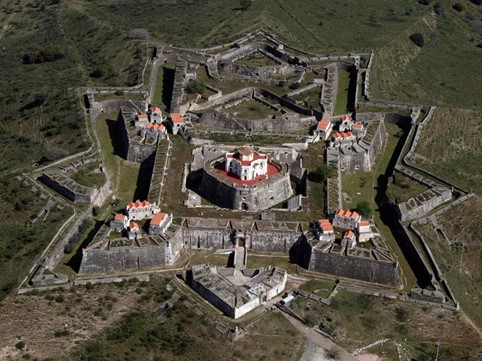
Picture 9: Image of a typical “star” fortress
As it has been for all the Empires of the past, Tartaria went through rise, stabilisation and then decline. At first natural elements rampaged on Great Tartaria. Then it was militarily attacked by neibouring countries.
The Great Tartaria’s epic finished by the end of the XIXth century. And its memory went in oblivion. The proofs of its existence were modified or destroyed.
Which was the reason why generations of people were mislead?
It seems there is a quite hidden “something” in our recent hystory.
Now I would like to focus attention on that area of the Great Tartaria’s that was where now Russia is.
The Golden Horde
The Golden Horde was a division of the Mongolian Empire, founded by Batu Khan. Osbek Khan (1313-1341) adopted Islam and created the widest spreading of the Empire, from Eastern Europe, Crimea to Siberia.

The main population was the “Rus Tribe”. [10]
After having been reunited by Tokhtamysh, the Empire was destroyed by Timur (Timurid Empire) around 1396. And it got divided in Khanato Sibir (Siberia), Khanato Uzbek (Uzbekistan), Orda Nogi (Caspian Sea), Khanato Kazan (Bulgaria), Khanato Crimea, Knato Qasim, Khanato Kazakh (Kazakistan) and the Great Horde.
What does the Great Horde mean?
The true name is “Altin Ordu” ( in modern Turkish “Altin Ordusu”) which means the Golden Army.
The other name is “Khanato Kipchak”.

The word ordu means heaquarters or nomadic tribe/group (see Genghis Khan), but around the XIVth century the Ottomans created the first permanent army in Europe and the Turkish meaning changes from headquarters/tribe/horde to army.
The word “altin” (golden) refers to something great/wonderful/good.
Nowadays in Turkish it can be used as a compliment to a child ( altin cocuk, or golden child) or to a person (altin yurekli, or golden heart/soul, philantropist).
Let’s give a look into the more recent history around the Golden Horde.
Akhmat (Ahmed) Khan’s Reign (1465-1481)
The following is the original version (end XXth century):
“Ahmed Khan excluded his brother Mahmud bin Kuchuk from power in 1465 and lined up with the Polish King against Ivan IIIrd of the Muscovite Russia. In 1476 Ivan IIIrd stopped paying the annual tribute to the Golden Horde (which inherited the Great Tartaria).
Ahmed Khan was fighting against the Crimean Kahnato, so his reaction to Ivan came only in 1480. Ahmed Khan’s army camped along Ugra river, but did not attack for months and then drew away. Russian hystorians identified in the absolute power of Ivan III’s army the cause of Akhmat Khan’s army withdrawal. That event poined out the end of the “Mongolian dominion” in Russia ( and later it became a significant part of the Russian nationalist hystorical recounting).
Let us come to some officially “not contemplated” historical information.
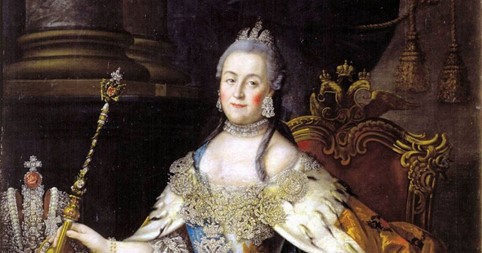
Picture 12: Catherine the Great portrayed by Alexey Antropov
The Czarina Catherine The Great, who annexed the Crimean Khanato to Russia, had Russian Medieval hystory rewritten so that her own kingdom’s hystory could have had a widely glorified version.
“…instead (Catherine) was facing wars on foreign as well as domestic fronts – Sweden, the Ottomans, Poland, Masonry, and writers such as Nikolai Novikov and Alexander Radischev. So Catherine turned to the long gone Russian Past in order to understand the present happenings.
The subtle re-elabrated version of the imperial image by Lampi, between 1792 and 1795, reveals how the Empress fought to find a way in which to embody the myth of her State in a period of revolution and regicide. During her last years, Catherine committed herself to the creation of a visual and textual legacy that would have ensured the eternal glory. In thirty four years Catherine built a symbolic scenario that affirmed its legitimacy showing her own successes” [11].
The Czarina Catherine The Great, who annexed the Crimean Khanato to Russia, had Russian Medieval hystory rewritten so that her own kingdom’s hystory could have had a widely glorified version.

Picture 13: Prof. Dr. Manfred Hildermeier; source: C.H. Beck
The German historian Manfred Hildemeier describes Ugra’s happening as fake and “hochstilisiert”, meaning “over-the-top”, or better “blown up”.
Hildemeier comes to the conclusion that the withdrawal of the “Golden Horde”s army is more connected with the rivalry amongs teh Khanates.
Another Russian hystorian says that the Golden Horde was the biggest army in the XVth century [12]. That means it was even bigger of the onlyprofessional army in Europe, the Ottoman one [13].
Quite often Ahmad Khan is called “Han/Xan” of the Golden Orde, and also “Han” of the Great Horde [14].
All the information so far comes from Russian sources (Tsarist Intelligence).
The last evidence of the Golden Horde is in the works of the Russian editor Nokolay Novikov, Ancient Russian Hydrography, 1773, about 46 years after Catherine’s death.
Why is that the Tartaric Empire so little known? Why were so many generations of people deceived?
The Romanovs and their ancestors were telling lies while creating a glorifing propaganda for their kingdoms, by twisting or ignoring the previous Rurikidi Dynasty. The Romanovs were not ethnically Russians. They belonged to a German Royal House, Holstein-Gottorp, a branch of the Oldenburgs from Lubeck, a city belonging to the Hanseatic League, and offices of many commercial “guildes” ( many Venitian ones).
It is absolutely necessary to state that before the so-called “Genghis Khan’s Empire” the was no trade between East and West. And after the creation of such an Empire trades bloomed (e.g.“the Silk Road”). The question is whether trade coud have happened with so many permanent wars.

The obvious answer is negative. Genghis Khan’s goal “The world from sea (Pacific Ocean) to sea (Atlantic Ocean)” had been partially reached. There were many cities bigger than Rome and Paris and they had both water and sewer systems.
City walls did not exist because all the cities belonged to the same Empire.
Within the Empire there were:
- full religious and economical freedoms, free elections, local courts and tribunals;
- taxes were 5-7% of income;
- lost porperty had to be returned to the owner, the penalty for theft was death;
- for the murder of ambassadors the whole population of a city would have been destroyed;
- the penalty for adultery was death; etc.
Now we will try to clarify the origin of Russia according to the official and the “non official” historiographies.

During my reasearches I read that Ruriki, a warlord, was a Varanghian leader hired in order to give militar stability to the new born Russia. To my recollection, Varanghs were similar to Vikings.
Rurik [15] was not a king but only a military leader. it seems that the Varanghs were a military elite group of the Eastern Roman Empire, safeguarding the Emperor, and they came from Russia, Scandinavia, Wends [16] and Anglo-Saxons escaping from England after 1066 A.C.
Durante le mie ricerche ho letto che il condottiero Rurik[15] era un capo varanghiano assunto per fornire stabilità militare alla neonata Russia. Una sorta di mercenario ante litteram. I varanghi erano in qualche modo simili ai vichinghi, per quanto mi pare di ricordare. La posizione di Rurik nella scala gerarchica era simile a quella di un comandante militare, ma non a quella di un sovrano. In seguito, gli storici hanno trasformato tutta la realtà dei fatti relativi a questo personaggio.

Picture 16: Source: Osprey
Lomonosov’s and Tatishchev’s studies
Lomongsov [17] was the last significant and relevant person in order to understand Russian history. Tatishchev [18] was a scientist with intellectual honesty, yet he had to undergo the new royalty’s agendas. Muller [19] and Schozer were part in the virtual destruction of 7.208 of Russian history. The English version wrongly calls that date “the Creation of the World”. It might have been a sort of peace treaty. Maybe in a far away past there has been a dreadful war, and 7.208 years later (in 1700 A.D.) that war did end. That happening must have been so meaningful anyhow.
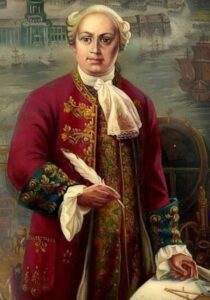
Picture 17: Michail Vasil’evič Lomonosov
I know what you are thinking about. But I am not allucinating, I am thinking how a Christian Ortodox would think seeing that 7208 A.M. (Anno Mundi) is a sacred date, the Year of Creation, from the Septuaginta.
The war, I hypothesized, could have been a real Cosmic War. I think that some German scholars, members of the “Russian” Scientific Academy did their very best in destroying the true Russian history and in concealing the history of the Great Tartarian Empire ( the legend of Saint Andrew, Saint Peter’s brother, who baptized the Shiites, ancestors of Slavs, while the Romanovs’ chronicles talk about the Baptism of Rus of Prince Vladimir (988 A.D.).
Before Peter the Great, they believed that the dating of time had to start from the date of Creation (Anno Mundi), September 1st 5509. September 1st 1699 of the Julian Calender (Anno Christi or A.D,) in Russia would have been the first day of the year 7208 (5509 plus 1699). December 18th or 20th, same year, Peter the Great established the beginning of the year on January 1st instead of September 15th, adopting the dating of the Christian Era, and reducing it to “only” 1670 years after Chist’s death. According to that system our History became 5500 years younger.
It could be shocking to discover that our Planet is only 7530 years old.
Anno Domini is based on the traditional calculation from Jesus’ conception or birth, counting B.C., before Chist or A.C. after Chist.
There is no 0 year in this scheme, so year 1 A.C. follows directly year 1 B.C. The system was crated in 525 by Dionysus Exiguus from Schythia Minor, but it stated to be used after 800. The purpose was to replace Diocletian Age, which was used in a old Easter’s table, because the memory of a tyrant who persecuted Christian was not to be perpetuated.
The last year of the old Diocletian Table, 247, was immediately followed by the first year of Exiguus’ table, 532 A.C.
When Exiguus devised his table, the years of the Julian Calendar were identified by naming the Consuls appointed for that same year. He stated that in “the present year” was “ when Prubus Junior was Consul”, 525 years after “the incarnation of our Lord Jesus Christ”!
Lomongsov and Tatischev died in stange circumstances (poisoned?) and disappeared together with the books they were working on, after having shown the results of their researches about the origin of Russia (which included the Great Tartary too) to their patrons, patrons that most likely had a part in the plot around the rewriting of history (nowadays in order to get rid of “disturbing” researchers, the system uses the scientific and social death, accusing them of being subversive through teh “help” of the so called “fact-checkers”!).
I do not fully agree with no one of the Russian scientists I mentioned so far. I totally agree with Nikolai Morozov [20] (Wikipedia mentions Morozov as a crazy loser due to his unconventional and daring ideas) and Anatoly Fomenko [21] (“Empirico-statistical Analysis of Narrative Material and its Applications”, History:Fiction of Science?”).
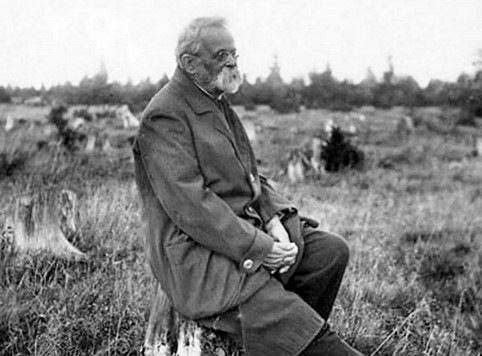
Picture 19: Nikolai Alexandrovich Morozov; apparently he was the oldest soldier to have fought in World War II.

Fig. 20: Anatoly Timofeevich Fomenko; image taken from the documentary The Color of Math by Katia Eremenko, presented at the Moscow Film Festival.
Let us take a step forward towards the ancient maps. I would like to underline that the colour codification in ancient maps could represent a standardized explanation ( when geographical areas have the same colour it means they belong to the same country) yet it highlights that the World related to the dating of those maps had three or four basic global powers: Spain, Portugal, Ottoman Empire and the Great Tartaria.
There is an historical theory saying that Genghis Khan never existed. He was fabricated in a book in XIXth century, where he is not mentioned directly but quoted in a translation meaning “great king”.
Tartarians never conquered their territories. They annexed them. Genghis Khan had a clear goal: “Peace from sea (Pacific Ocean) to sea (Atlantic Ocean)”; taxes being 5-7% of income; full freedom within the country; protection from outer enemies.
From 1552 (Kazakhstan’s occupation by Russian Armies with the help of Catholic Rome) the gradual falsification of history started. Attila, Vth century, and Genghis Khan, XIIIth century, did spread terror in the whole of Asia and in Europe too.
Tartarians never conquered their territories. They annexed them. Genghis Khan had a clear goal: “Peace from sea (Pacific Ocean) to sea (Atlantic Ocean)”…

Tartarians were unbeatable warriors. So Catholic Rome was aiming to their destruction by using underground and devious methods: murder, poisoning, civil war. At the same time Rome was using Russia as a tool to reach its goal.
Famine, diseases, civil conflicts weakened the Tartarian Empire, while history was bein rewritten and a Tartarian-Mongolian yoke was made up in order to prove Russian occupations in the East.
The official Russian historiography, commissioned by the Tzars during the XVIIIth century, totally erased the Tartarian state from all the archives.
After the collapse of the Golden Horde, in 1712 Russia introduced the condition of “slave” (the word Slav might originate from that), and enslaved farmers ( they could have been sold like livestock) which got abolished only in 1861.
Up to 1917 (the year of the October Revolution), Tartars did not drink alcohol. During the Soviet Era, Tartars together with Russians started to drink alcohol and became more “civilized” and “manipulable”, exactly as the Soviet Communist Regime wanted.
An excerpt from a CIA document, created in 1957 and declassified in 1998 has drawn our attention. And it quotes:
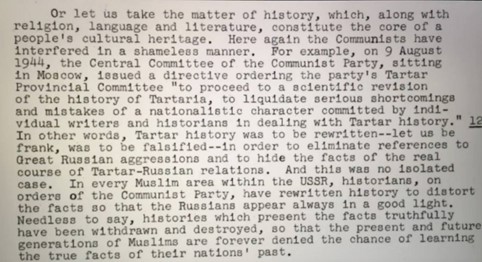
Picture 22: Document on the history of Tartary declassified by the CIA
Clearer than that!
To be followed in part 2
Notes
[1] The gilda or guild, a term of uncertain origin (perhaps from the Germanic gelten, “value”, or from the Anglo-Saxon gylta, “religious society”, was a typically Germanic corporation that developed at the turn of the 1st millennium. Source: https://it.wikipedia.org/wiki/Gilda_(storia).
[2] Hobbes T., Leviathan, London 1651.
[3] A pandemic (from Ancient Greek πάνδημος, pándēmos, “that which affects all people”, “public”, “general”) is the spread of an epidemic disease in large geographical areas on a global scale, consequently involving a large part of the world’s population , in the disease itself or in the simple risk of contracting it. This situation presupposes the lack of immunization of humans against a highly dangerous pathogen. Numerous pandemics have occurred in human history. Source: https://en.wikipedia.org/wiki/Pandemic
[4] Encyclopædia Britannica, Vol. III, Edinburgh, 1771, p. 887.
[5] The Kings of Tartary: (Genealogie Des Anciens Empereurs Tartares, Descendus De Genghiscan)
[6] Nowadays, surnames such as “Canato – Canati” exist above all in Veneto.
[7] Shiltrberger Johan, The bondage and Travels of Johan Shiltberger, 1427,trad. dal Prof. Karl Friedrich Neumann nel 1859 – pag. 37.
[8] M. Guellete, Tartarian Tales, London 1816.
[9] The caravanserai is a building usually made up of a wall enclosing a large courtyard and a portico. It was used to stop the caravans crossing the desert. Source: https://it.wikipedia.org/wiki/Caravanserraglio.
[10] What is the rabbit hole? And why does it indicate the entrance to another world? In today’s rhetoric, the image of the white rabbit indicates an unexpected event that leads to the understanding of a superior reality that undermines the convictions of a lifetime in one fell swoop.
[11] Source: Erin McBurney, Art and Power in the Reign of Catherine the Great: The State Portraits.
[12] V. Nesin, Pavlovsk Imperatorskiĭ i Velikokni͡a︡zheskiĭ, 1777-1917.
[13] Source: Manfred Hildermaier, Geschichte Russlands: Vom Mittelalter bis zur Oktoberrevolution.
[14] Source: Charles Halperin, Russia and the Golden Horde: The Mongol Impact on Medieval Russian History.
[15] Rurik (also Riurik; c 830-879), according to 12th-century chronicles, was a Varangian chieftain of Rus’, who in the year 862 gained control of Ladoga and built Novgorod in the same year. This legendary figure was considered by later rulers to be the founder of the Rurik dynasty, which ruled Kievan Rus’ and its successor states, including the Kingdom of Ruthenia, the Principality of Tver, the Grand Duchy of Vladimir, the Grand Duchy of Moscow, the Republic of Novgorod and the Tsardom of Russia, until the 17th century. Source: https://it.qaz.wiki/wiki/Rurik.
[16] In German-speaking Europe during the Middle Ages, the term “Wends” was interpreted as synonymous with “Slavs” and used sporadically in literature to refer to West Slavs and South Slavs living within the Holy Roman Empire. The name probably survived in the Finnic languages (Finnish: Venäjä, Estonian: Vene, Karelian:Veneä), denoting Russia. According to a shared theory, the Germanic peoples first applied this name to the ancient Veneti, and then after the migration period they transferred it to their new neighbours, the Slavs.
[17] Mikhail Vasil’evich Lomonosov (19 November 1711, Denisovka – 15 April 1765, St. Petersburg) was a Russian scientist and linguist. Source: https://it.wikipedia.org/wiki/Michail_Vasil%27evi%C4%8D_Lomonosov.
[18] Vasily Nikitich Tatishchev (April 19, 1686 – July 15, 1750) was a prominent Imperial Russian statesman, historian, philosopher, and ethnographer, best remembered as the author of the first full-scale history of Russia and the founder of three Russian cities: Stavropol-on-Volga (now Tolyatti), Yekaterinburg and Perm. Source: https://en.wikipedia.org/wiki/Vasily_Tatishchev.
[19] Johannes von Müller (3 January 1752 in Schaffhausen – 29 May 1809 in Kassel) was a German-born Swiss historian and politician.
[20] Nikolai Alexandrovich Morozov, 7 July 1854, Borok – 30 July 1946. After the October Revolution Morozov had little interest in politics and continued to follow Lesgaft – Petrograd (Leningrad) PS Institute of Natural Sciences until his death , at the age of 92. Based on astronomical records (such as the Almagest) he assumed that much of human history has been falsified. His theories on the chronology of the Middle East and Israel before the first century BC. later they attracted the attention of Anatoly Fomenko, who based his New Chronology on them.
[21] Anatoly Timofeevich Fomenko (born March 13, 1945 in Stalino, USSR) is a Russian and Soviet mathematician, professor at Moscow State University, known as a topologist and a member of the Russian Academy of Sciences. He is the author of a pseudoscientific theory known as New Chronology, based on the works of Russian-Soviet writer and Freemason Nikolai Alexandrovich Morozov. He is also a member of the Russian Academy of Natural Sciences (1991).

